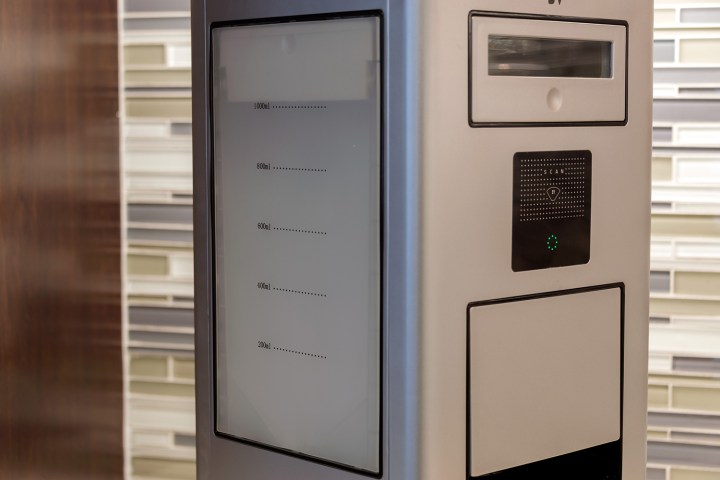
The evolution of home-brewed coffee looks like this for many Americans: In the ’80s and earlier, Folgers was fine. Then, buying fresh-ground coffee from a local shop (or Starbucks) became chic. Soon, grinders became a staple in many coffee-lovers’ homes, turning former instant-joe swillers into snobs who insisted that the best part of waking up was whole-bean java in their cups.
Now we have the Bonaverde, which offers a new innovation: It builds every part of the coffee-making process into one machine. It actually turns raw beans into coffee by roasting, grinding, and brewing them — no extra equipment needed. Our review of the original Bonaverde Berlin brewing system was a mixed bag, but now the creators of the do-it-all coffee maker are promising even more functionality — the machine now accepts any beans that you want to use.
“This is the freshest coffee you’ll ever taste,” inventor Hans Stier tells Reuters. First, the user pours raw, green beans into the machine. Then, using RFID technology, the Bonaverde reads a tag included with the beans to roast them for a precise time and at the right temperature. Once the roasting process is done, a door opens, depositing the beans into the grinder. The final brewing step takes place in the filter, and the coffee drips into the waiting carafe.
There are a few reasons raw beans are preferable to roasted. For one, they stay fresher longer. From the farmers’ fields to your cup, it takes months for beans to become coffee, according to the National Coffee Association USA. Bonaverde hopes to help empower farmers by eventually letting them sell their beans directly to consumers. At first, the machines only worked with beans from the company’s farmers to prevent “established coffee retailers” from selling raw beans that may exploit farmers. The company has now expanded the machine to accept any beans.
The company also said that it has expanded its supply chain to offer a wider range of coffee from its own farmers. The beans are picked based on their quality and the impact they have on the communities where they come from. The beans picked by the company also include custom roasting profile recipes so you can get the most out of each coffee and easily pick out new favorites.
The Bonaverde launched on Kickstarter and Indiegogo in 2013, raising more than $800,000. The machines were supposed to ship in October 2014, but faced a few sticky issues that pushed back the release date. The delay and some design changes (including the RFID, which wasn’t mentioned in the original pitch) angered some backers, according to Crowdfund Insider. The decision to open the machine up to all beans should satisfy some of those complaints.
Updated September 5 to reflect the Bonaverde now allows users to roast any coffee bean.


